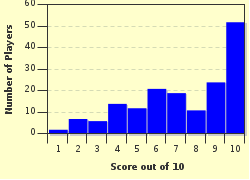Quiz Answer Key and Fun Facts
1. Colchester started off as a group of settlements, covering about 12 square miles in all. It was the centre for a local tribe, the Trinovantes. What race of people were the Trinovantes? Hint: this was before the Romans invaded.
2. In 43 AD, the Romans invaded Britain. They took over Colchester, and built a fort there (which is still there). The Roman soldiers stayed until about 49 AD, when they returned to Italy, leaving ordinary Roman citizens behind. Local tribes then tried to attack it, but the citizens defeated them, kept the castle, and built a town around it. In 54 AD a temple made of stone was built to the emperor of that time. Who was he?
3. In 60 AD, Queen Boudicca led a rebellion against Colchester. The rebels burned down the entire town (including the temple) and killed as many people as they could. Which neighbouring tribe did Boudicca and her fighters belong to?
4. In 407 AD, the Romans left Britain, and the Saxons started to invade. Colchester no longer had bustling life in its streets. Maybe a few Saxons chose to live and farm the land there, but it was nothing compared to Roman times. Historical records for Colchester went silent too. However, years later, in 931 AD, Athelstan (the king at that time) had a 'witenagemot' there. What's a 'witenagamot'?
5. In 1413, Colchester was granted a new coat of arms. The red background represented the blood of Christ (the population was Catholic) and it featured Colchester's patron saint. Who is that?
6. In medieval times, fishing in Colchester became popular. The town evolved into being famous for a particular dish, caught from the River Colne. What food was it?
7. In the 12th century, Colchester's port was opened. The name was taken from an Old English word for a landing place for ships. What was the port called?
8. In 1710, a charity school opened in Colchester. What was this school called?
9. On April 22nd, Colchester was hit by an earthquake measuring 4.6 on the Ritcher Scale. Not much, perhaps, but it caused more than its fair share of damage, damaging around 1200 buildings. At least one person died. When was this earthquake?
10. In 1883, a water tower was built near the Balkerne Gate. It hasn't been used since 1988, but people still go up (there are 157 steps) and look out over Colchester. It was sold to a private bidder in 2006. What is it's name? Hint: The name comes from an elephant.
Source: Author
GreenGal
This quiz was reviewed by FunTrivia editor
bloomsby before going online.
Any errors found in FunTrivia content are routinely corrected through our feedback system.


